| |
Date |
Event(s) |
| 1 | 1642 | - 25 Dec 1642—20 Mar 1727: Sir Isaac Newton is born
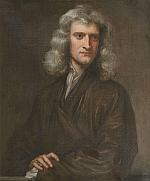
Physicist, mathematician and inventor. Laid the foundation of classical mechanics, which formed the basis of physical science until Einstein. Formulated universal laws of motion and the law of universal gravitation. Demonstrated how these laws explained both the motion of planets and comets and objects on Earth. Invented a form of the calculus. Invented the first practical reflecting telescope. Proposed that Earth was an oblate spheroid. Calculated the speed of sound.
|
| 2 | 1706 | - 17 Jan 1706—17 Apr 1790: Benjamin Franklin is born
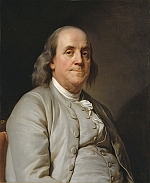
Benjamin Franklin was an American polymath who was active as a writer, scientist, inventor, statesman, diplomat, printer, publisher, forger and political philosopher. Among the leading intellectuals of his time, Franklin was one of the Founding Fathers of the United States, a drafter and signer of the United States Declaration of Independence, and the first United States Postmaster General.
|
| 3 | 1773 | - 16 Dec 1773: Boston Tea Party
The Boston Tea Party was an American political and mercantile protest by the Sons of Liberty in Boston, Massachusetts, on December 16, 1773. The target was the Tea Act of May 10, 1773, which allowed the British East India Company to sell tea from China in American colonies without paying taxes apart from those imposed by the Townshend Acts. The Sons of Liberty strongly opposed the taxes in the Townshend Act as a violation of their rights. Protesters, some disguised as Indigenous Americans, destroyed an entire shipment of tea sent by the East India Company.
|
| 4 | 1775 | - 1775: The Flush Toilet is Invented
In 1775 Scottish inventor Alexander Cumming was granted the first patent for a flush toilet. His greatest innovation was the S-shaped pipe below the bowl that used water to create a seal preventing sewer gas from entering through the toilet.
- 19 Apr 1775—3 Sep 1783: American Revolutionary War
The American Revolutionary War, also known as the Revolutionary War or American War of Independence, was a major war of the American Revolution. Widely considered as the war that secured the independence of the United States, fighting began on April 19, 1775, followed by the Lee Resolution on July 2, 1776, and the Declaration of Independence on July 4, 1776. The American Patriots were supported by the Kingdom of France and, to a lesser extent, the Kingdom of Spain and the Dutch Republic, in a conflict taking place in North America, the Caribbean, and the Atlantic Ocean.
|
| 5 | 1776 | - 4 Jul 1776: The United States Declaration of Independence is signed
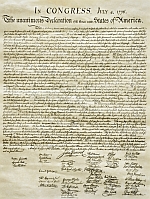
The United States Declaration of Independence, officially The unanimous Declaration of the thirteen united States of America, is the pronouncement and founding document adopted by the Second Continental Congress meeting at Pennsylvania State House, which was later renamed Independence Hall, in Philadelphia, Pennsylvania, on July 4, 1776. Enacted during the American Revolution, the Declaration explains why the Thirteen Colonies at war with the Kingdom of Great Britain regarded themselves as thirteen independent sovereign states and no longer subject to British colonial rule. With the Declaration, the 13 states took a collective first step in forming the United States and, de facto, formalized the American Revolutionary War, which had been ongoing since April 1775.
|
| 6 | 1787 | - 18 Nov 1787—10 Jul 1851: Louis Daguerre is born
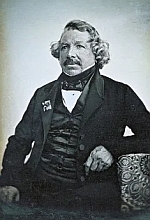
Louis-Jacques-Mandé Daguerre (18 November 1787 – 10 July 1851) was a French artist and photographer, recognized for his invention of the eponymous daguerreotype process of photography. He became known as one of the fathers of photography. Though he is most famous for his contributions to photography, he was also an accomplished painter, scenic designer, and a developer of the diorama theatre.
|
| 7 | 1789 | |
| 8 | 1794 | - 14 Mar 1794: The Cotton Gin is Invented
Designed to separate cotton fiber from seed, Eli Whitney's cotton gin, for which he received a patent on March 14, 1794, introduced a new, profitable technology to agricultural production in America. The cotton gin is a device for removing the seeds from cotton fiber.
|
| 9 | 1796 | - 1796: Smallpox vaccine developed
The smallpox vaccine is the first vaccine to be developed against a contagious disease. In 1796, British physician Edward Jenner demonstrated that an infection with the relatively mild cowpox virus conferred immunity against the deadly smallpox virus. Not everyone was on board with Jenner and his vaccine. Rumors circulated at the time that it would turn people into cows. But by 1801, through extensive testing, it was shown to effectively protect against smallpox
In Jenner’s time, smallpox killed around 10 percent of the population, with the number as high as 20 percent in towns and cities where infection spread more easily. In 1821 he was appointed physician extraordinary to King George IV
The last natural outbreak of smallpox in the United States occurred in 1949.
|
| 10 | 1797 | |
| 11 | 1801 | |
| 12 | 1809 | - 4 Mar 1809—4 Mar 1817: President James Madison
4th President of the United States. Born Mar. 16, 1751. Died Jun. 28, 1836 at the age of 85.
|
| 13 | 1812 | - 7 Feb 1812: Charles Dickens is born
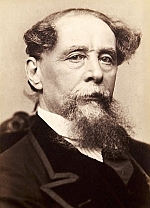
Charles John Huffam Dickens was an English writer and social critic. He is famous for his novels that touch upon the sensitive issues of poverty, child labour, and slavery. Some of the books he is known for are Oliver Twist, David Copperfield, A Tale of Two Cities, and Great Expectations.
- 18 Jun 1812—17 Feb 1815: War of 1812
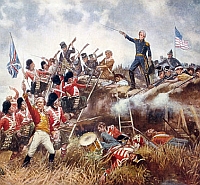
The War of 1812 was a conflict fought between the United States and the United Kingdom, and their respective allies from June 1812 to February 1815. Historians in Britain often see it as a minor theater of the Napoleonic Wars; in the United States and Canada, it is seen as a war in its own right.
Peace negotiations began in August 1814, and the Treaty of Ghent was signed on December 24. News of the peace did not reach America for some time. Unaware of the treaty, British forces invaded Louisiana and were defeated at the Battle of New Orleans in January 1815. These late victories were viewed by Americans as having restored national honour, leading to the collapse of anti-war sentiment and the beginning of the Era of Good Feelings, a period of national unity. News of the treaty arrived shortly thereafter, halting military operations. The treaty was unanimously ratified by the US Senate on February 17, 1815, ending the war with no boundary changes.
|
| 14 | 1815 | - 10 Dec 1815: Ada Lovelace is born
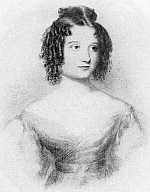
Augusta Ada King, Countess of Lovelace (née Byron) was an English mathematician and writer, known for her work on Charles Babbage's mechanical general-purpose computer, the Analytical Engine. She was the first to recognise that the machine had applications beyond pure calculation, and published the first algorithm intended to be carried out by such a machine. As a result, she is sometimes regarded as the first to recognise the full potential of a "computing machine" and the first computer programmer.
Lovelace was the only legitimate child of the poet Lord Byron and his wife Anne Isabella "Annabella" Milbanke, Lady Wentworth. Ada translated an article by Italian military engineer Luigi Menabrea, on the Babbage engine, supplementing it with a set of notes, which contain what many consider to be the first computer program, an algorithm designed to be carried out on the engine, if it had ever been built.
|
| 15 | 1817 | |
| 16 | 1818 | - 1818—20 Feb 1895: Frederick Douglass is born
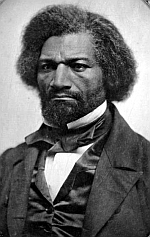
Born into slavery, he successfully escaped 3 Sep 1838. He was a Social reformer, author and orator. Leader in US abolitionist movement. Supported women’s rights movement. Became licensed preacher (1839). Publisher and editor, The North Star (1847-1851), later Frederick Douglass’ Paper (1851-1860). Publisher and editor, the New National Era (1870). Nominated for Vice-President by the Equal Rights Party (1872). Appointed President, Freedmen’s Savings Bank (1874). Served as US Ambassador to Haiti (1889-1891). Works include: Narrative of the Life of Frederick Douglass, an American Slave (1845); My Bondage and My Freedom (1855); and Life and Times of Frederick Douglass (1st ed., 1881, revised, 1892).
|
| 17 | 1820 | - 12 May 1820: Florence Nightingale is born
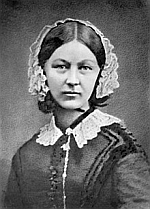
Florence Nightingale, (12 May 1820 – 13 August 1910) was an English social reformer and statistician, and the founder of modern nursing.
Nightingale came to prominence while serving as a manager and trainer of nurses during the Crimean War, in which she organised care for wounded soldiers. She gave nursing a favourable reputation and became an icon of Victorian culture, especially in the persona of "The Lady with the Lamp" making rounds of wounded soldiers at night. In 1860, Nightingale laid the foundation of professional nursing with the establishment of her nursing school at St Thomas' Hospital in London.
|
| 18 | 1822 | - 27 Dec 1822: Louis Pasteur is born
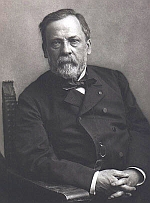
Louis Pasteur (December 27, 1822 – September 28, 1895) was a French biologist, microbiologist and chemist renowned for his discoveries of the principles of vaccination, microbial fermentation and pasteurization. His discoveries have saved many lives. He reduced mortality from puerperal fever, and created the first vaccines for rabies and anthrax. His medical discoveries provided direct support for the germ theory of disease and its application in clinical medicine. He is best known to the general public for his invention of the technique of treating milk and wine to stop bacterial contamination, a process now called pasteurization.
|
| 19 | 1825 | - 4 Mar 1825—4 Mar 1829: President John Quincy Adams
6th President of the United States. Born Jul. 11, 1767. Died Feb. 23, 1848 at the age of 81.
- 27 Sep 1825: World's first public railway to use steam locomotives
The Stockton and Darlington Railway (S&DR) was a railway company that operated in north-east England from 1825 to 1863. The world's first public railway to use steam locomotives, its first line connected collieries near Shildon with Stockton-on-Tees and Darlington, and was officially opened on 27 September 1825. While coal wagons were hauled by steam locomotives from the start, passengers were carried in coaches drawn by horses until carriages hauled by steam locomotives were introduced in 1833.
Many of the earliest locomotives for commercial use on American railroads were imported from Great Britain, including first the Stourbridge Lion and later the John Bull. However, a domestic locomotive-manufacturing industry was soon established. In 1830, the Baltimore and Ohio Railroad's Tom Thumb, designed by Peter Cooper, was the first commercial US-built locomotive to run in America.
|
| 20 | 1826 | - 1826: The World's First Photograph
Joseph Nicéphore Niépce (7 March 1765 – 5 July 1833), was a French inventor, usually credited with the invention of photography. Niépce developed heliography, a technique he used to create the world's oldest surviving product of a photographic process: a print made from a photoengraved printing plate in 1825. In 1826 or 1827, he used a primitive camera (Atlas Obscura) to produce the oldest surviving photograph of a real-world scene. Among Niépce's other inventions was the Pyréolophore, one of the world's first internal combustion engines, which he conceived, created, and developed with his older brother Claude Niépce.
|
